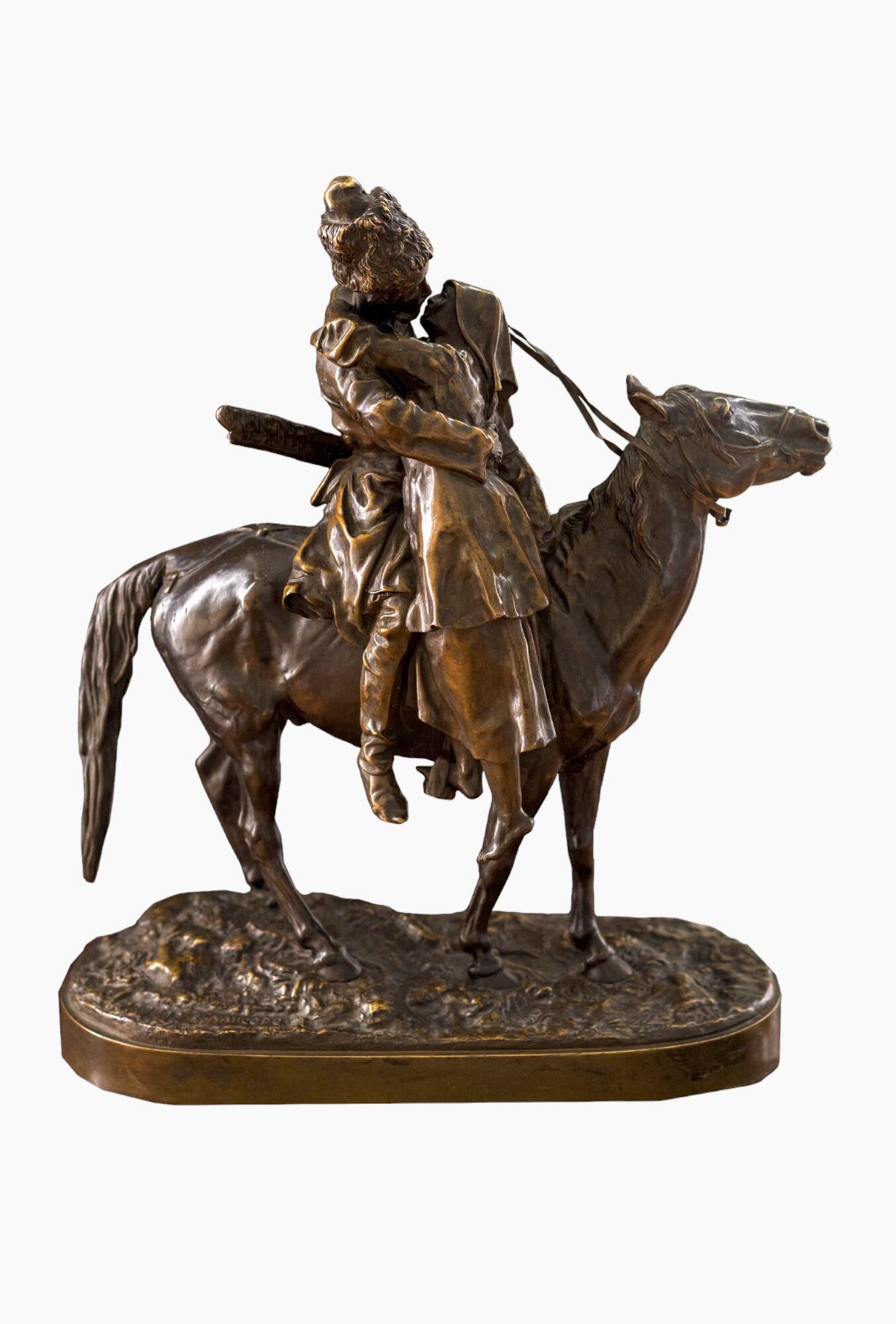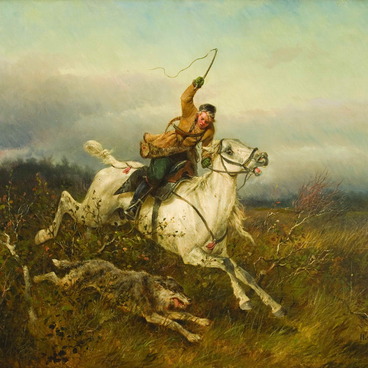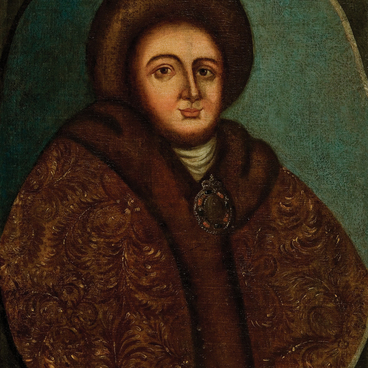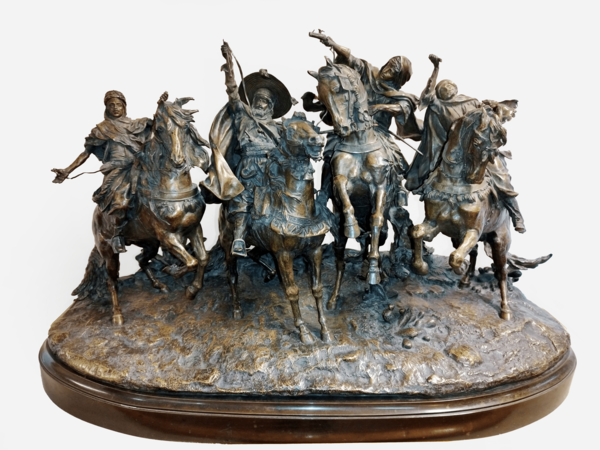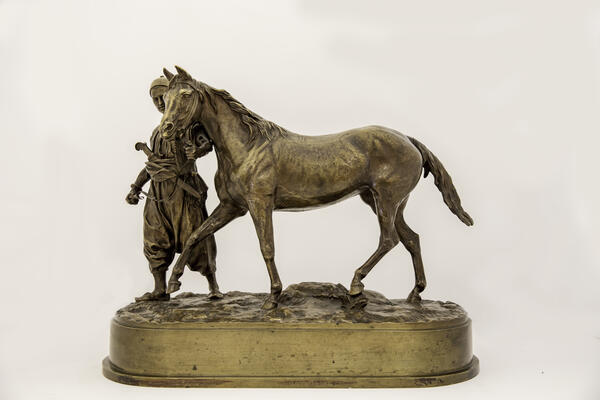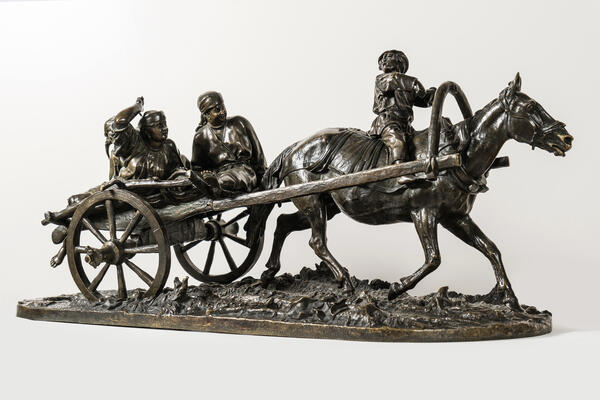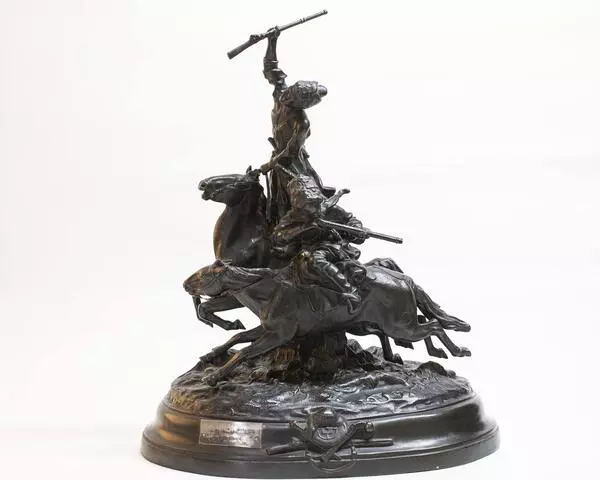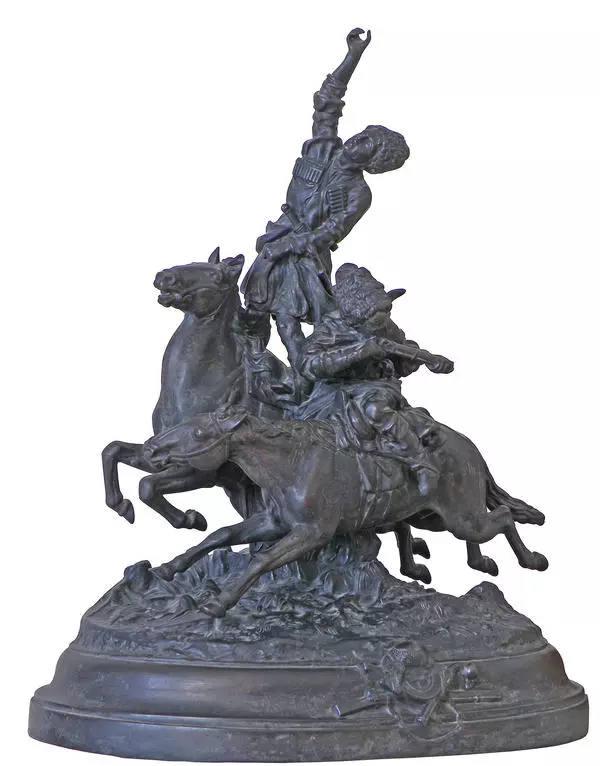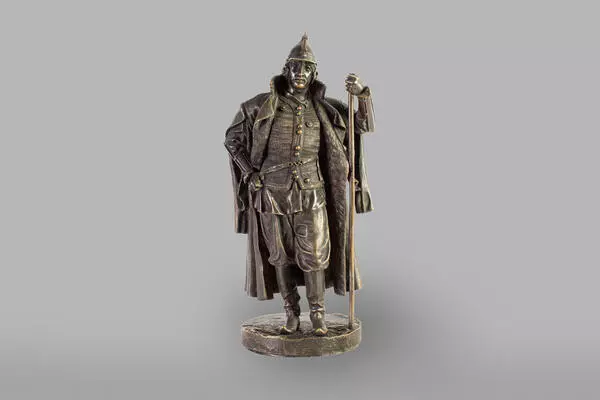Yevgeny Alexandrovich Lanceray was a famous Russian animal sculptor. Lanceray was born in Morshansk, and entered the gymnasium there. When he was 13 years old, his family moved to St. Petersburg. Yevgeny Alexandrovich entered the Law Faculty of St. Petersburg University. He had no special art education and was engaged in modeling on his own, using the advice of the sculptor Nikolai Lieberich. In 1872, for his art works, Lanceray received the title of class artist of the first degree from the Academy of Arts and soon became an honorary free member of the Academy.
Lanceray often used images of horsemen in his art. Among such works are “Farewell of a Cossack to a Cossack Girl, ” “The Chase, ” “Prince Svyatoslav on the Road to Constantinople, ” “The Royal Falconer, ” “Ruslan and the Magic Head, ” and “After Battle.” Yevgeny Lanceray showed interest in the depiction of horses as a child. The boy, who loved to draw animals, asked the village blacksmith to cast a bronze horse for him. His father, upon learning about this, suggested that the future sculptor cast the shapes of horses from wax himself.
The vast majority of Yevgeny Lanceray’s works have been preserved in bronze. Many of them were cast in St. Petersburg at one of the largest bronze foundries, the Felix Chopin factory. In the work of the 22-year-old artist, the manufacturer saw the features of a new artistic style. The first works were cast in 1870. At the end of 1880, Chopin acquired exclusive ownership of the reproduction of 17 models (among them — “Farewell of a Cossack to a Cossack Girl”) for ten years. On Chopin’s instructions, Lanceray traveled to Algeria, where he created a series of works based on national motifs. After Chopin’s departure to France and his death in the late 1880s, his daughter inherited the company.
Lanceray was particularly mindful about the details: he depicted the breeds of horses appropriate for a particular situation, and elaborately worked out the costumes of the riders.
In 1878, Lanceray created a sculpture dedicated to
the Cossacks. The meeting with the Don Cossacks impressed the artist so much
that he expressed his emotions and observations in the famous work “Farewell of
a Cossack to a Cossack Girl.” This model enjoyed extraordinary success in
Russia. About a dozen of its variants are known, created for various bronze
foundry enterprises by sculptors Vasily Grachev, Eugene Naps, and Andrey Wolf.
